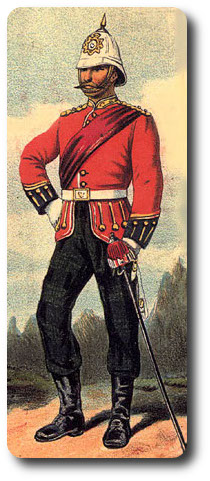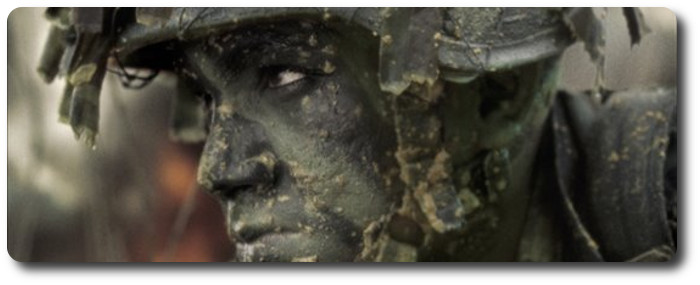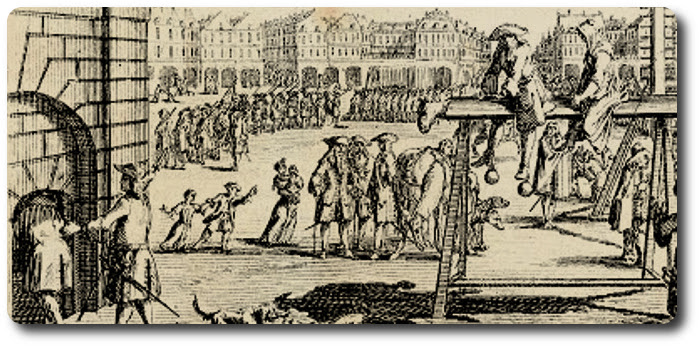NIOBE and RAINBOW
Topic: RCN

NIOBE and RAINBOW
From the Orders-in-Council documents archives on line by Library and Archives Canada, we find the following memorandum on commissioning and manning HMCS NIOBE and HMCS RAINBOW:
"Subject to approval of Treasury, Admiralty are prepared to sell 'Niobe' to Canadian Government for lump sum of £215,000 made up as follows—for ship in efficient seagoing and fighting condition, £160,000 – guns and torpedoes £20,000 – ammunition and packages, outfit only £25,000 – sea stores without coal £10,000."
From Graham Greene to Admiral Kingsmill, 10 December 1909
"Admiralty, S.W. 30th July, 1910.
"Sir,
"I am commanded by my Lords Commissioners of the Admiralty to acquaint you for the information of the Secretary of State for the Colonies that they have under theur careful consideration the arrangements to be made in connection with the commissioning and manning of the two cruisers purchased by the Government of Canada.
"As the Secretary of State will remember the Admiralty undertook as part of the scheme discussed at the Imperial Conference to transfer to the Dominion Government two of the older cruisers of the Royal navy for use as training ships for the new naval service of Canada and at the same time they agreed that the two cruisers should be manned by volunteers from the officers and men or the Royal Navy, on the active or retired lists.
"The choice of the Canadian Government fell upon the 1st Class protected cruiser "Niobe" and the 2nd Class protected cruiser "Rainbow" and these two vessels will shortly be ready for commissioning. An agreement has been come to with the Department of the Naval Service of Canada as to the composition of the complements of the two cruisers and there is reason to expect that naval ratings will volunteer in sufficient number.
"The following general arrangements have been discussed with the Minister of Naval Service of Canada.
"As regards discipline it is proposed that the officers and men serving under the Canadian Government should be governed by the Naval Discipline Act as applied to the Canadian Naval Force by section 48 of the Naval Service Act passed this year by the Canadian Government, viz:
"The Naval Discipline Act, 1868 and the Acts in amendment thereof passed before Parliament of the United Kingdom for the time being in force, and the King's Regulations and Admiralty Instructions, in so far as the said Acts, regulations and instructions are applicable, and except in so far as they may be inconsistent with this Act or with any regulations under this Act, shall apply to the Naval Service and shall have the same force in law as if they formed part of this Act."
"Owing however to the fact that legal questions have been raised as to the power of a Dominion Parliament to apply the Naval Discipline Act to officers and men serving in Dominion ships of war outside territorial waters and also as to the exact effect of such application of the same, whether within or without territorial waters, it has been agreed as a provisional measure, that the formal transfer of the cruisers wo the Canadian Government should be made on their arrival in Canadian waters, and that the vessels should be commissioned by the Admiralty for the voyage to Canada the officers and men selected being appointed to H.M. Ships "Niobe" and "Rainbow"in the same manner as if they were ships of war under the administration of the Admiralty. The Commanding Officers will be given directions to proceed to Canada in pursuance of the instructions of the Minister of the Naval Service and on arrival to place themselves under the Minister's orders.

"Although the Commissions given by the Admiralty to officers of the Royal navy remain in force wherever the officers may be serving, yet it is understood that the terms of the Naval Service Act of Canada may render it desirable that supplementary Commissions should be issued to them by the Canadian Government, and it is proposed, provisionally, to leave this point to the discretion of the Minister or Naval Service. The appointments already given by the Minister of Naval Service to the officers selected will take effect on the arrival of the vessels in Canadian waters, and on their transfer to the Canadian Government.
"My Lords are of the opinion that the legislative application of the Naval Discipline Act and King's Regulations to the Naval Force of Canada will be of very great advantage in maintaining that close connection between the Dominion Service and the Royal navy which was contemplated at the Imperial Conference last year, and they do not wish to cause any unnecessary delay in giving full effect to the arrangement proposed at the Conference; but it is essential that there should be no doubts as to the law governing the discipline of the officers and men lent to a Dominion Government and as to the general status and position of Dominion ships of war especially outside the territorial waters of the Dominions. It is proposed, therefore, to make these questions the subject of a further communication and in the meanwhile it is understood that the Canadian Government agree that the cruisers are not to leave the vicinity of the coasts of Canada or visit a foreign port without the concurrence of the Admiralty.
"As regards the engagement of volunteers from the Active and Reserve lists of the Royal Navy, ir is proposed that both classes of ratings should sign an agreement in the terms of the form annexed to this letter and that men in the Reserves should also sign and engagement to enter the Royal navy for service in the Canadian Naval Force, the period of such service being specific in the agreement. It is understood that men entered from the shore not being under any liability to service in the Royal Navy, will sign a separate engagement as approved by the Minister of the Naval Service.
"The pay and allowances of officers and men during the period of their engagement commencing from their appointment to the Cruisers will be in accordance with the scale approved by the Privy Council of Canada and communicated by the Minister of Naval Service. The whole charge for such pay will fall upon the Canadian Government.
"Active service officers and men will draw no pay and allowances from Imperial funds, but will be entitled to count their agreed service in the Canadian Naval Force as Naval service in accordance with Admiralty regulations. Royal Fleet Reserve men, Class A, and Pensioners not in the Royal Fleet Reserve, will continue to draw their Naval pensions from Imperial funds. Royal Fleet Reserve men, Class A, will be entitled to count their service in the Canadian Naval Force, if satisfactory, as qualifying service, in that Class of Reserves, for a Royal Fleet Reserve Pension. Royal Fleet Reserve men, Class B, will be discharged from the Reserve on re-entering the Royal Navy for service with the Canadian Government. They will not draw their retainers while so employed, but they will be re-enrolled in the Reserve on return to the United Kingdom and will be entitled to count their service in the Canadian Naval Force, if satisfactory, as qualifying service for a Royal Fleet Reserve Pension or gratuity on discharge. During their service in the Canadian Naval force men of the Royal Fleet Reserve will be abolished from the necessity of performing drills as members of the Reserve.
"Looking to the fact that the Imperial Government will be liable for the retired pay, service pensions or gratuities of officers and men lent to the Canadian Government it is considered that the Dominion Government should bear the charge for such proportion of the retired pay, pension or gratuity as may be due to actual paid service in the Canadian naval force. The basis on which such a payment should be made by the Canadian Government and its scope is being discussed separately, and it is not expected that there will be any difficulty in settling the details of an arrangement acceptable to both Governments.
"My Lords desire me to request that the Secretary of State will communicate the substance of this letter to the Government of Canada and to state that they will be glad to receive by cable as soon as possible an intimation of the consurrence of the Dominion Government in the genral arrangements referred to herein.
"I am, etc., (Sd.) W.J. Evans, pro Secretary."

Memorandum of Conditions of Service In the Canadian Naval Force
The service of Volunteers in the Canadian Naval Force will be subject to the following conditions.
Men in the Reserves and Pensioners will sign the usual engagement form to join the Royal Navy for 'x' years for service in the Canadian Naval Force. Volunteers from the Active List will serve for two years in the Canadian Naval Force. All classes will be subject during such service to Naval Discipline. They will receive from the Canadian Government the pay and allowances and clothing, &c., prescribed in the regulations issued by the Minister of Marine and except those who are Naval pensioners and will continue to draw their pensions, they will not be entitled to any pay or allowances from the Admiralty.
Leave with pay will be granted as prescribed in the regulations referred to above: it may be taken annually or allowed to accumulate and be taken at, but prior to, the termination of the period of service. Service in the Canadian Naval Force will count as Naval service in accordance with Admiralty Regulations.
Passage to England will be provided by the Canadian Government on termination of the engagement.
I hereby acknowledge that I have read the foregoing and agree to serve under the conditions mentioned above.

Posted by regimentalrogue
at 12:01 AM EST

 General Robert E. Lee, one of the most revered generals in the history of the United States, did not have a checklist, but he did teach maxims which he used to teach his subordinates. Lee had seven basic and universal rules:
General Robert E. Lee, one of the most revered generals in the history of the United States, did not have a checklist, but he did teach maxims which he used to teach his subordinates. Lee had seven basic and universal rules: 


 Today a camp of nearly 2,000 men will be formed on the Garrison common for the purposes of military instruction. The officer commanding will be Col. Denison, D.A.G., of this district. It is fortunate in one way that the camp will be in Toronto. It will give many an opportunity of seeing citizen soldiery under canvas, while visiting Toronto during the Semi-Centennial celebration. It will also give the men themselves an opportunity of taking part in the celebration, a thing they would have been unable to do if the camp had been at Niagara.
Today a camp of nearly 2,000 men will be formed on the Garrison common for the purposes of military instruction. The officer commanding will be Col. Denison, D.A.G., of this district. It is fortunate in one way that the camp will be in Toronto. It will give many an opportunity of seeing citizen soldiery under canvas, while visiting Toronto during the Semi-Centennial celebration. It will also give the men themselves an opportunity of taking part in the celebration, a thing they would have been unable to do if the camp had been at Niagara.  To the members of "C" Company Infantry School, who will be under canvas, the various corps will look for an example of soldierly bearing and discipline. All eyes, so to speak, will be upon them, and there is no doubt they will maintain the credit of their corps, and leave an impression upon their comrades from a distance that a "regular," after all, is worth imitating.
To the members of "C" Company Infantry School, who will be under canvas, the various corps will look for an example of soldierly bearing and discipline. All eyes, so to speak, will be upon them, and there is no doubt they will maintain the credit of their corps, and leave an impression upon their comrades from a distance that a "regular," after all, is worth imitating.






 Never did a Commander-in-Chief offer more valuable advice than did
Never did a Commander-in-Chief offer more valuable advice than did 







 Many Canadians will have seen at least passing reference to
Many Canadians will have seen at least passing reference to 


 Several reasons are urged by scientific and military experts in favour of our infantry soldiers wearing scarlet coats. In the first place, scarlet affords the best attainable protection against the extremes of heat and cold to which soldiers are liable to be exposed. The darker the color protecting a warm body, the more rapidly radiation proceeds. With reference to protection from the sun, scarlet takes a far higher place than any of the blues, greens, or drabs and other shades often used for military clothing. Although scarlet or red is more conspicuous than grey when the sun shines directly on the troops it blurs on the sight and is consequently more difficult to hit. It is a distinct advantage that our men should bulk large in the decisive stages of an encounter, and there is no color which enables them to do this so effectively as scarlet. On the whole therefore every scientific consideration justifies the retention of scarlet as the best uniform for our troops.
Several reasons are urged by scientific and military experts in favour of our infantry soldiers wearing scarlet coats. In the first place, scarlet affords the best attainable protection against the extremes of heat and cold to which soldiers are liable to be exposed. The darker the color protecting a warm body, the more rapidly radiation proceeds. With reference to protection from the sun, scarlet takes a far higher place than any of the blues, greens, or drabs and other shades often used for military clothing. Although scarlet or red is more conspicuous than grey when the sun shines directly on the troops it blurs on the sight and is consequently more difficult to hit. It is a distinct advantage that our men should bulk large in the decisive stages of an encounter, and there is no color which enables them to do this so effectively as scarlet. On the whole therefore every scientific consideration justifies the retention of scarlet as the best uniform for our troops.
 A compilation of survey and interview data led to the formulation of a list of critical behaviors for Division Commanders (and other leaders) that would best assure creation of "A Command climate that supports operational excellence ["Operating"] and also motivates competent people to continue their military service ["Improving".] They are taken from the Leader Behavior Preference (LBP) items and provide a convenient description of critical behaviors as seen by study participants. They are described as "The BIG 12":
A compilation of survey and interview data led to the formulation of a list of critical behaviors for Division Commanders (and other leaders) that would best assure creation of "A Command climate that supports operational excellence ["Operating"] and also motivates competent people to continue their military service ["Improving".] They are taken from the Leader Behavior Preference (LBP) items and provide a convenient description of critical behaviors as seen by study participants. They are described as "The BIG 12":








 From the
From the 

 A Guide to Riflemen of
A Guide to Riflemen of 
 The jungle-covered limestone ridges [of the Dak To] took a physical toll even with-out the lung-busting effort of combat. A load for an American soldier on the move might weigh as much as fifty pounds all told. Typically, he lugged at least five hundred rounds for his M-16, loaded eighteen or nineteen to a magazine. He was issued belt pouches to carry his magazines, but he often packed some of them in canteen covers or in a cloth claymore mine bag for easier access.
The jungle-covered limestone ridges [of the Dak To] took a physical toll even with-out the lung-busting effort of combat. A load for an American soldier on the move might weigh as much as fifty pounds all told. Typically, he lugged at least five hundred rounds for his M-16, loaded eighteen or nineteen to a magazine. He was issued belt pouches to carry his magazines, but he often packed some of them in canteen covers or in a cloth claymore mine bag for easier access.

 Officers' orderlies are of very ancient origin. It would appear that
Officers' orderlies are of very ancient origin. It would appear that